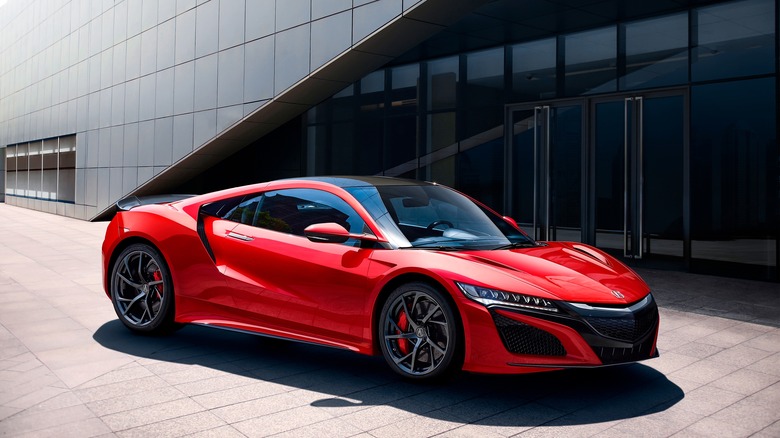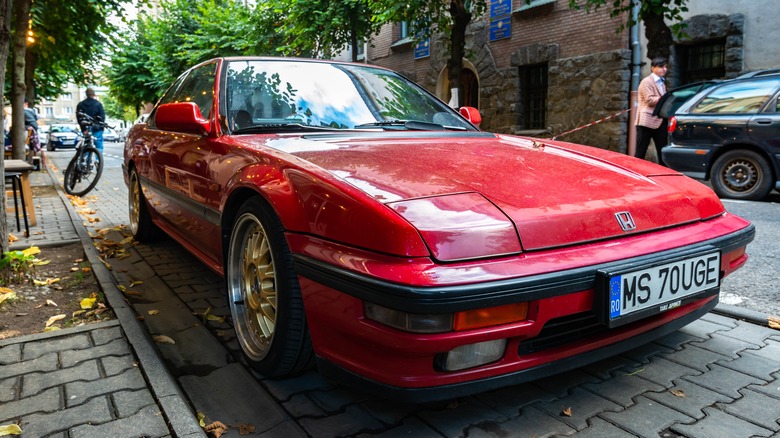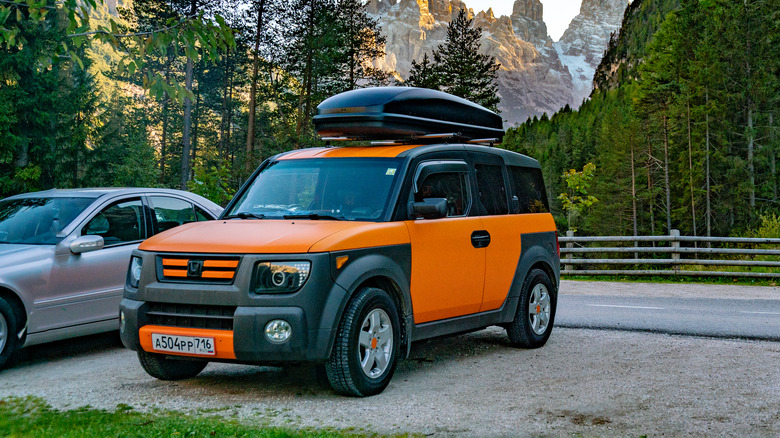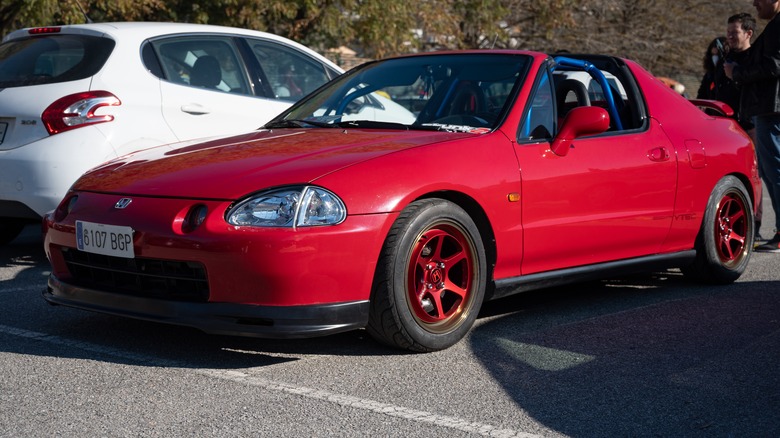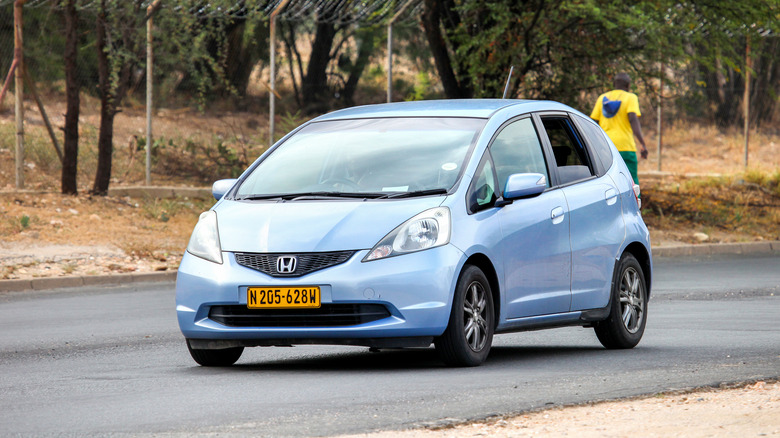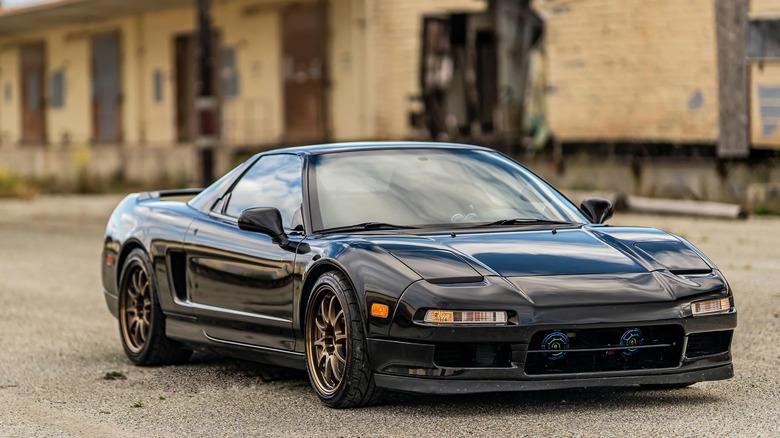5 Cars That Honda Should Have Never Discontinued
The world's largest and most profitable automobile manufacturers are not immune to mistakes in their decision-making from time to time. Volkswagen was fined billions of dollars after the Dieselgate scandal, and Tesla is now facing growing concerns regarding its autopilot systems.
Honda is no exception. The world's seventh-largest automaker racked up $126 billion in global sales last year, clearing more than $5 billion in profits. But even given that undeniable financial success, Honda has a track record of ending the production of some popular and distinctive vehicles, ranging from economical subcompacts to practical gear haulers to exciting yet street-friendly supercars.
One thing Honda's discontinued vehicles have in common is that they are sorely missed among the boring cookie-cutter bubble cars on the road today. Let's take a look at a handful of the models that Honda has given up on, and examine the reasons why the automaker saw fit to stop production of these once-beloved machines.
The Prelude
Honda first produced the Prelude in 1978 as a shortened version of its wildly popular Accord sedan. The Prelude got a suspension redesign and a small engine upgrade in 1983, and US-based sales for the second generation jumped, ranging from 41,000-77,000 units or so per year between 1983 and 1987. The next set of big changes came for the 1988 model year and included a 2.0 liter DOHC engine and four-wheel steering. The 1998-1991 third-generation Prelude was the most successful, with more than 300,000 units sold.
The fourth-generation redesign in 1992 brought a departure from the signature wedge-shaped design and a more rounded look along with another boost in engine power.
As the Prelude lost its distinctive angular shape and started to blend in with the crowd, sales numbers began to flatten and drop like a marble rolled forward from the windshield of a second-generation model; from 36,000 cars in 1992 to 22,540 the following year to barely 12,000 in 1996. Honda brought back some of the sharper corners for another redesign in 1997, but the refreshed look did little to boost sales numbers, and the model was dropped in 2001.
The Element
Honda introduced the boxy Element in 2003, touting its versatility and dog-friendly features that included a roomy and easy-to-clean rear cargo area for your furry friend. In 2010, Honda began offering an optional pet package that added a loading ramp, water bowl, and rear restraints along with covers for the back seats. Unfortunately, these extras weren't enough to keep the Element from the chopping block, and the model was discontinued later that year.
The Element's strongest sales performance came when it was still a novelty, with more than 67,000 sold in its first year and modest declines over the next few years. By 2009, sales had dropped below 15,000 units, with buyers moving to crossovers and traditional SUVs and away from the Element's quirky delivery-truck design. Elements have proven to be typically durable Honda stalwarts, with many lasting well beyond 200,000 miles. In their long-term review, Car and Driver touted both the Element's drivability and its cargo capacity, with one staffer filling it with band equipment and another loading in a nine-foot Christmas tree with ease. None of those reasons were enough to keep the Element on the sales floor though.
Del Sol
Honda's targa version of the Civic, the CR-X Del Sol, first appeared in American markets in 1992. These sporty open-topped models were popular during the era, but despite its sharp styling and excellent road manners, the Del Sol failed to keep up with the popularity of Mazda's Miata and had a short shelf life, lasting only through the 1997 model year. While domestic models were equipped with a simple removable top that could be stowed behind the rear seat, European and Japanese models came with a complex robotic mechanism called the TransTop, which Road and Track called "The most baffling convertible top ever made."
Despite the Del Sol's unique styling, open-air cabin, and fuel economy (the 1995 model got an impressive 30mpg city and 37mpg highway), it never caught on with American buyers. Honda sold just under 26,000 Del Sols in 1993, and numbers dropped slightly the following year, then plummeted to just over 14,000 sold in 1995. By the time Honda got around to eliminating the model in 1997, they were only able to clear about 5600 Del Sols from dealership lots.
The Fit
Honda has traditionally made its mark cranking out smaller, economical vehicles. The Fit, born from the tradition of the Civic, certainly matches that description to a T. These models were meant to sit at the low end of Honda's product line and offer buyers an option that combines fuel economy, affordability, and a fun driving experience in a form small enough to make city parking a breeze.
Honda began offering the Fit in 2007, and updated it four times: in 2009, 2012, 2015, and 2018. Sales were promising at first, leaping from just under 30,000 units in the Fit's first year to almost 80,000 in 2008. With an impressive fuel economy of 33mpg city and 40mpg highway giving it a nearly 400-mile range, the Fit was a formidable road trip machine, but the increasing popularity of hybrids and plug-in EVs seemed to take a bite out of the Fit's market share.
Sales steadily dropped after that peak year; in 2017, the Fit's sales numbers failed to reach the 50,000 unit benchmark and the following year Honda sold just a little more than 35,000 Fits. At the end of the 2020 model year, Honda retired the nameplate and replaced the Fit with the newest version of the Civic and the HR-V crossover.
The NSX
Honda first introduced the head-turning, neck-snapping NSX in 1991 as a street-friendly supercar. The NSX was given the upscale Acura badge for United States markets but it was otherwise left unchanged from its original version. In their review of the 1994 model, Car and Driver staffers were astounded by the NSX's combination of performance and street manners, comparing the car's specs to those of the Ferrari F40 while commenting that the NSX was drivable enough to use for everyday errands and praising the comfortable cockpit. "Remember, Honda satisfies millions of customers every year who expect the seats to fit them, imagine a mid-engined sportster with every ergonomic detail as correct as in an Accord."
The second generation NSX was introduced in 1997, bringing upgrades to the engine and gearbox. The V-6 motor was boosted from 3.0 to 3.2 liters, and the manual transmission was expanded from five to six gears.
The NSX got a major facelift in 2002, losing the pop-up headlights as part of a significant aerodynamic restyling. These changes increased the top speed to 175mph and the third generation remained in production until 2005. The next round of updates didn't come until a decade later when Honda unveiled the 2016 NSX at the 2015 North American International Auto Show.
The fourth-gen NSX was a technological marvel, with a twin-turbo hybrid 3.5L V-6 capable of 573 horsepower putting power to the wheels via three separate motors: two in front and one in back. Honda sold fewer than 1000 copies of the latest generation NSX – likely due to the base price of nearly $170,000 — and the automaker ended the NSX's memorable and remarkable run at the end of 2022.
